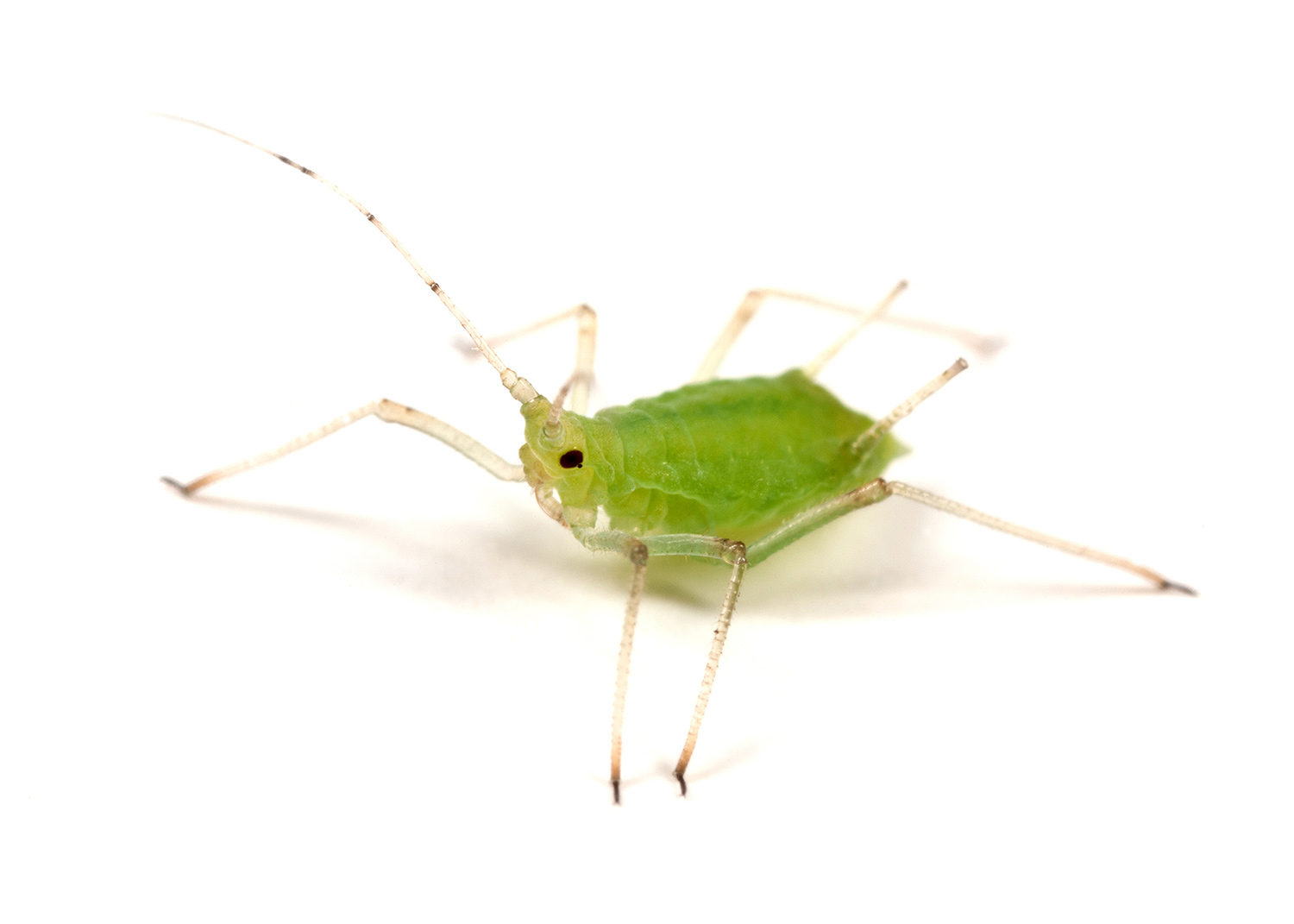Aphids suck sap from plants and leave behind a sticky substance known as honeydew. Honeydew leaves plants weak and more susceptible to fungi and disease. These small pear-shaped pests can often be found in large numbers on plant leaves and flowers. Our selection of aphid control products will help you remove aphids from your lawn and garden, preventing plant damage.
 How To Kill Aphids and Prevent an Infestation
How To Kill Aphids and Prevent an Infestation As with many garden pests, one solution usually does not take care of the issue. A multi-step approach is the best way to treat and prevent aphids from ruining your garden or plants.
Remember, when using any insect control products, make sure your plants will not be damaged. Many times beneficial insects are also killed or repelled by many remedies, including natural ones (like garlic or capsaicin) along with chemical-based insecticides.
Here are some Aphid pictures to help you recognize them:
Aphids are an eighth of an inch long with soft, pear shaped bodies. Depending on the type, they can be green, yellow black, gray, or red. They can have transparent wings, but wingless are more common. They have very distinct tube-like structures coming from the rear of their bodies called cornicles. These distinguish them from other insects.
The life cycle of an aphid is very quick. It only takes one or two weeks for an aphid to complete its lifecycle. Females usually reproduce asexually, usually to more females. Males are produced only by some species in the cooler months. Aphid populations can explode very quickly; a female can give birth to up to 12 live young a day and it only takes 7 to 8 days for a nymph to become a reproducing adult. At 80 young a week, this population can get out of hand very fast.
Aphids are commonly found on garden vegetables like beans, cabbage, melons, cucumber, peas, potatoes, pumpkin, squash, and tomatoes. You will also find aphids on roses and hydrangeas, and trees like ash, birch, elm, linden, maple, oak, and walnut. They remove the sap from their host plant which results in curled, puckered, or yellowed leaves. They can stunt the growth of plants and make them lifeless and limp.
Some species of aphid create galls, while others inject toxins while they feed. They are too tiny to induce any bites. They excrete a sticky substance called “honeydew” from excess sap they cannot digest. This honeydew can cause a black, sooty mold to grow on it, and also attracts other undesirable insects such as ants, flies, wasps, and bees.
Can't find the product you are looking for? E-mail us and we'll get it for you!
We sell professional do it yourself pest control (diy), exterminator and
extermination insecticide, pesticide, chemical and bug killer treatment
products to spray, eliminate and exterminate pests.
Many of our products are not available in stores
such as Home Depot, Walmart or Lowes.